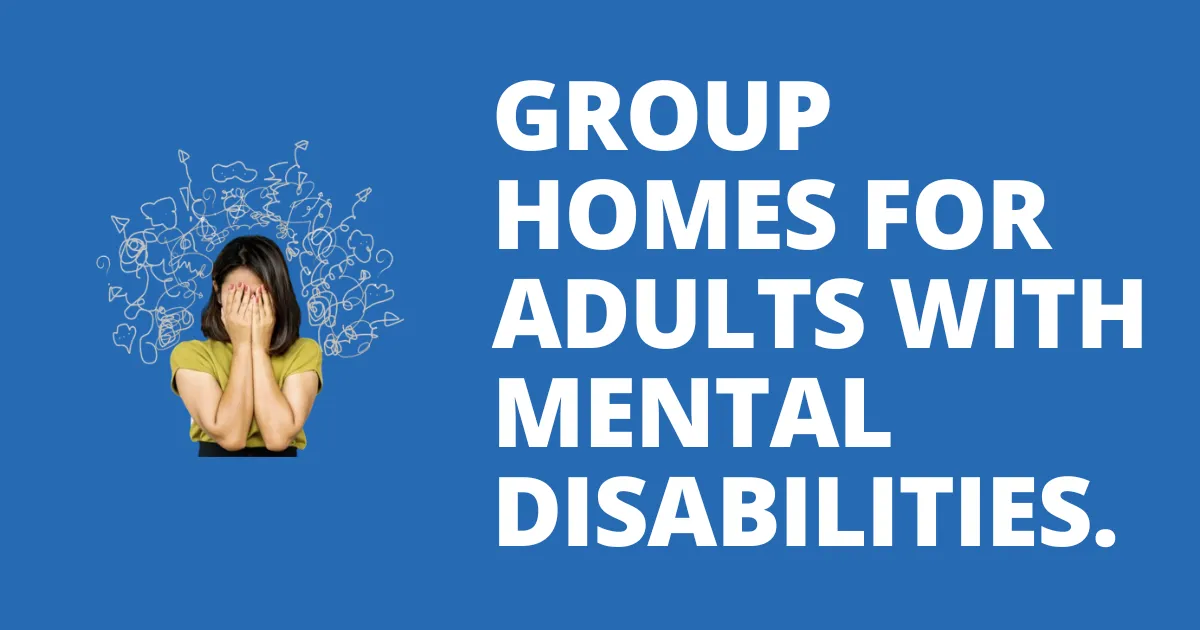Group Homes for Adults with Mental Disabilities
Group homes for adults with mental disabilities are essential havens, offering a supportive environment that fosters growth, independence, and community integration. This article delves into the world of group homes, exploring their benefits, challenges, and the crucial role they play in enhancing the lives of individuals with mental disabilities.
Understanding Mental Disabilities
Definition and Types of Mental Disabilities
Mental disabilities encompass a broad range of conditions that affect an individual’s cognitive, emotional, and social abilities. These can include developmental disorders, such as autism spectrum disorder (ASD), intellectual disabilities, and severe mental health conditions like schizophrenia and bipolar disorder.
Common Misconceptions
Many people hold misconceptions about mental disabilities, often stemming from a lack of understanding. It’s crucial to recognize that individuals with mental disabilities can lead fulfilling lives with the right support and environment.
What are Group Homes?
Definition of Group Homes
Group homes are residential care facilities designed to provide a supportive living environment for individuals with mental disabilities. They offer personalized care, supervision, and opportunities for residents to develop life skills and build social connections.
Differences Between Group Homes and Other Care Facilities
Unlike institutional settings, group homes emphasize a home-like atmosphere and focus on integrating residents into the community. They offer more personalized and less restrictive care compared to large-scale institutions or nursing homes.
Benefits of Group Homes
Individualized Care
Group homes provide tailored care plans that address each resident’s unique needs, ensuring they receive the appropriate support and attention.
Community Integration
Residents are encouraged to participate in community activities, fostering social inclusion and reducing the stigma associated with mental disabilities.
Independence and Life Skills Development
Group homes focus on enhancing residents’ independence by teaching essential life skills such as cooking, cleaning, and managing finances, enabling them to lead more self-sufficient lives.
Types of Group Homes
Supervised Group Homes
These homes offer 24/7 supervision and support, making them ideal for individuals who require constant care and assistance with daily activities.
Semi-Independent Living Homes
Residents in semi-independent living homes receive some level of supervision but are encouraged to take on more responsibilities and participate in decision-making processes.
Fully Independent Living Homes
These homes cater to individuals who have developed significant independence and require minimal supervision, providing a transitional step towards complete self-sufficiency.
Choosing the Right Group Home
Assessing Individual Needs
Selecting the appropriate group home involves a thorough assessment of the individual’s physical, emotional, and social needs to ensure the environment will be supportive and conducive to their growth.
Evaluating Home Facilities and Staff
It’s important to visit potential group homes, meet the staff, and evaluate the facilities to ensure they meet safety standards and offer a comfortable living space.
Importance of Location
The location of the group home should be convenient for family visits and provide access to community resources, healthcare facilities, and recreational activities.
Daily Life in a Group Home
Typical Daily Schedule
Residents follow a structured daily routine that includes personal care, meals, recreational activities, and time for education or vocational training.
What kind of training do staff members in group homes receive?
Staff members in group homes typically receive comprehensive training in areas such as mental health care, first aid, CPR, crisis intervention, and specific techniques for supporting individuals with mental disabilities. Ongoing professional development is also common to ensure that caregivers stay up-to-date on best practices.
Are group homes safe for adults with severe mental disabilities?
Yes, group homes are designed to provide a safe and supportive environment for adults with severe mental disabilities. They have safety protocols, trained staff, and appropriate facilities to ensure the well-being of all residents. It’s important to visit and evaluate potential homes to ensure they meet high safety standards.
How can the community support group homes?
Communities can support group homes by volunteering, donating resources, participating in awareness campaigns, and fostering inclusive attitudes towards residents. Building partnerships with local businesses and organizations can also enhance the support network for group homes
Conclusion
Group homes for adults with mental disabilities are essential in creating a nurturing and inclusive environment where residents can grow, learn, and integrate into the community. They provide personalized care, foster independence, and offer opportunities for social inclusion, making a significant difference in the lives of individuals with mental disabilities. Despite facing challenges such as funding and staff retention, the positive impact of group homes is undeniable. By supporting these homes through community involvement, volunteering, and advocacy, we can ensure that they continue to thrive and provide the vital services that residents need to lead fulfilling lives.

